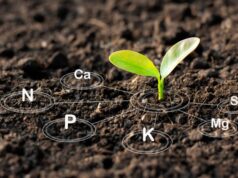Hydroponic farming is a form of agriculture that is gaining popularity due to its numerous benefits. Hydroponic systems grow plants without soil, using nutrient solutions instead. This method of farming allows for more efficient use of space, water, and resources, making it a sustainable and eco-friendly alternative to traditional farming.
How Hydroponic Farming Works
In hydroponic farming, plants are grown without soil, using nutrient solutions instead. These solutions contain all the minerals and nutrients that plants need to grow. Hydroponic systems can be set up in a variety of ways, but they all work on the same basic principles.
In hydroponic farming, the roots of plants are suspended in the nutrient solution. This solution is constantly aerated to ensure that the roots have access to oxygen. The pH of the solution is carefully controlled to ensure that the plants can absorb the nutrients they need.
Advantages of Hydroponic Farming
Hydroponic farming offers a number of advantages over traditional farming methods. These benefits include:
1. Water Conservation
Hydroponic farming uses up to 90% less water than traditional soil farming. The nutrient solutions used in hydroponic systems are recirculated, reducing water waste. This makes hydroponic farming an ideal choice for areas with limited water resources.
2. Space Efficiency
Hydroponic systems can be built vertically, allowing farmers to grow more crops in less space. This is especially useful in urban areas, where space is limited.
3. Pest Control
Hydroponic systems are less prone to pests and diseases than traditional farming. This is because the plants are grown in a controlled environment, making it easier to monitor and control pests. This reduces the need for pesticides and other chemicals, making hydroponic farming a healthier option for both the environment and consumers.
4. Year-Round Growing
Hydroponic systems can be used to grow crops year-round, regardless of climate and weather conditions. This is because the environment in hydroponic systems is carefully controlled, allowing for optimal growing conditions all year round.
Types of Hydroponic Systems
There are several types of hydroponic systems that can be used for farming. These include:
1. Deep Water Culture
In deep water culture systems, plants are suspended in a nutrient solution that is constantly aerated. This system is simple to set up and maintain, making it an ideal choice for beginners.
2. Drip System
In a drip system, a timer-controlled pump delivers nutrient solution to plant roots at regular intervals. This allows for precise control over the amount of nutrient solution each plant receives, making it an efficient system for large-scale hydroponic farming.
3. Ebb and Flow
In ebb and flow systems, nutrient solution is periodically flooded into the growing tray and then drained back into a reservoir. This system is easy to set up and maintain, making it a popular choice for home gardeners.
4. Nutrient Film Technique
In a nutrient film technique system, a thin film of nutrient solution is circulated over the plant roots. This system is highly efficient and can be used to grow a wide variety of crops.
Setting Up a Hydroponic System
Setting up a hydroponic system can be challenging, but with the right preparation and knowledge, it can be a rewarding experience. Here are some steps to help you get started:
1. Choosing the Right Location
Hydroponic systems require a stable environment with consistent temperature, humidity, and lighting conditions. Choose a
location that is free from direct sunlight, as this can cause algae growth in the nutrient solution.
2. Choosing the Right System
There are many different types of hydroponic systems to choose from. Consider the size of your space, the type of crops you want to grow, and your budget when selecting a system.
3. Choosing the Right Nutrients
Nutrient solutions are a critical component of hydroponic farming. Choose a high-quality nutrient solution that is specifically formulated for hydroponic systems.
4. Planting the Seeds
Plant the seeds in the hydroponic system according to the instructions provided by the manufacturer. Make sure to keep the pH and nutrient levels of the solution within the optimal range for the crops you are growing.
5. Maintenance
Hydroponic systems require regular maintenance to ensure that they continue to function properly. This includes monitoring the pH and nutrient levels of the solution, cleaning the system, and ensuring that the plants receive adequate light and water.
Conclusion
Hydroponic farming is a sustainable and efficient alternative to traditional farming methods. By using nutrient solutions to grow plants, hydroponic systems offer numerous benefits, including water conservation, space efficiency, pest control, and year-round growing. With the right preparation and knowledge, anyone can set up a hydroponic system and enjoy the benefits of fresh, healthy produce all year round.
So, if you want to start your own hydroponic garden, follow the steps mentioned above and get ready to experience the joys of hydroponic farming.







